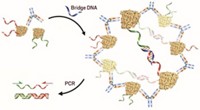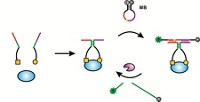Advertisement
Grab your lab coat. Let's get started
Welcome!
Welcome!
Create an account below to get 6 C&EN articles per month, receive newsletters and more - all free.
It seems this is your first time logging in online. Please enter the following information to continue.
As an ACS member you automatically get access to this site. All we need is few more details to create your reading experience.
Not you? Sign in with a different account.
Not you? Sign in with a different account.
ERROR 1
ERROR 1
ERROR 2
ERROR 2
ERROR 2
ERROR 2
ERROR 2
Password and Confirm password must match.
If you have an ACS member number, please enter it here so we can link this account to your membership. (optional)
ERROR 2
ACS values your privacy. By submitting your information, you are gaining access to C&EN and subscribing to our weekly newsletter. We use the information you provide to make your reading experience better, and we will never sell your data to third party members.
Analytical Chemistry
PCR offers new way to detect disease antibodies
DNA-based method is 1,000 times as sensitive as current diagnostic techniques
by Erika Gebel Berg, special to C&EN
March 10, 2016
| A version of this story appeared in
Volume 94, Issue 11

To diagnose some conditions, such as autoimmune disease, doctors often look for certain antibodies in patients’ blood. Unfortunately, these proteins can be few and far between.
Now, researchers have developed a polymerase chain reaction (PCR) method for detecting such antibodies that is 1,000 times as sensitive as enzyme-linked immunosorbent assay (ELISA), the gold-standard test (ACS Cent. Sci. 2016, DOI: 10.1021/acscentsci.5b00340).
In ELISA, antigen proteins sit on a plastic slide and bind to antibodies present in a sample, capturing them for detection. But “some antigen proteins unfold when bound to the ELISA plate,” which prevents antibodies from binding them, says Carolyn R. Bertozzi, a chemist at Stanford University and editor-in-chief of ACS Central Science. Also, ELISA isn’t usually sensitive enough to detect the low antibody levels in saliva or urine or in blood during the early stages of a disease.
In the new study, Bertozzi’s team wanted to detect antibodies associated with autoimmune thyroid disease. These antibodies bind the protein thyroglobulin.
The researchers first attached thyroglobulin (beige) to one of two different DNA sequences (red, green). Then they incubated these conjugates with a blood sample containing thyroglobulin antibodies (Y shapes).
Because the antibodies bind two thyroglobulin molecules, the antibodies bring the tethered DNA strands close to each other. The scientists added a piece of DNA bridging the two types of strands (shown). The team used PCR to amplify a piece of DNA that contained the two linked sequences. They detected it using gel electrophoresis.
The method detected 100 to 100,000 antibodies in 2 µL of serum, Bertozzi says .
Mark W. Pandori of the University of California, San Francisco, says this approach appears to be sensitive enough to detect antibodies in saliva, which would be helpful for diagnostics in resource-poor areas.





Join the conversation
Contact the reporter
Submit a Letter to the Editor for publication
Engage with us on Twitter